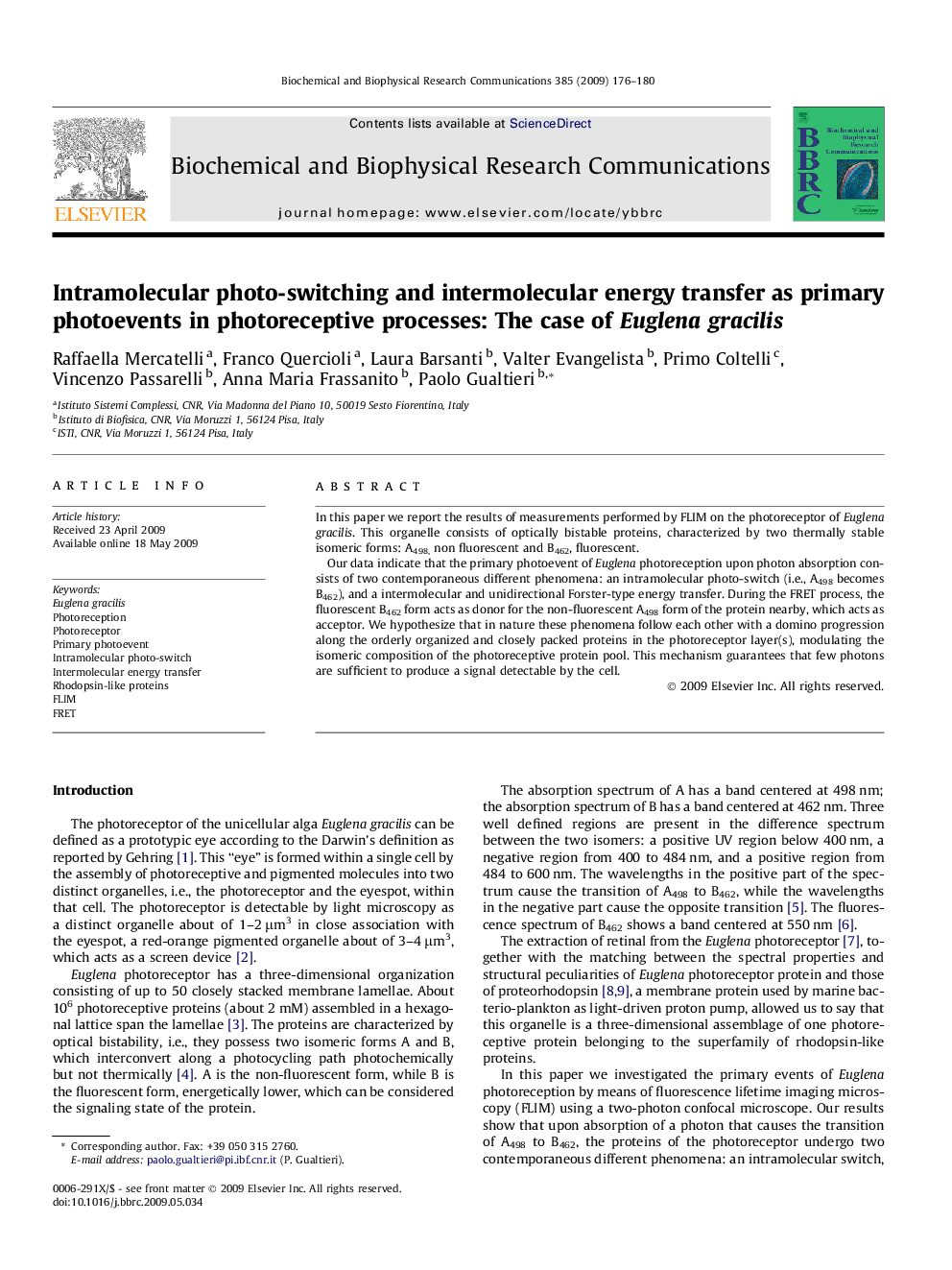| Article ID | Journal | Published Year | Pages | File Type |
|---|---|---|---|---|
| 1933491 | Biochemical and Biophysical Research Communications | 2009 | 5 Pages |
In this paper we report the results of measurements performed by FLIM on the photoreceptor of Euglenagracilis. This organelle consists of optically bistable proteins, characterized by two thermally stable isomeric forms: A498, non fluorescent and B462, fluorescent.Our data indicate that the primary photoevent of Euglena photoreception upon photon absorption consists of two contemporaneous different phenomena: an intramolecular photo-switch (i.e., A498 becomes B462), and a intermolecular and unidirectional Forster-type energy transfer. During the FRET process, the fluorescent B462 form acts as donor for the non-fluorescent A498 form of the protein nearby, which acts as acceptor. We hypothesize that in nature these phenomena follow each other with a domino progression along the orderly organized and closely packed proteins in the photoreceptor layer(s), modulating the isomeric composition of the photoreceptive protein pool. This mechanism guarantees that few photons are sufficient to produce a signal detectable by the cell.
